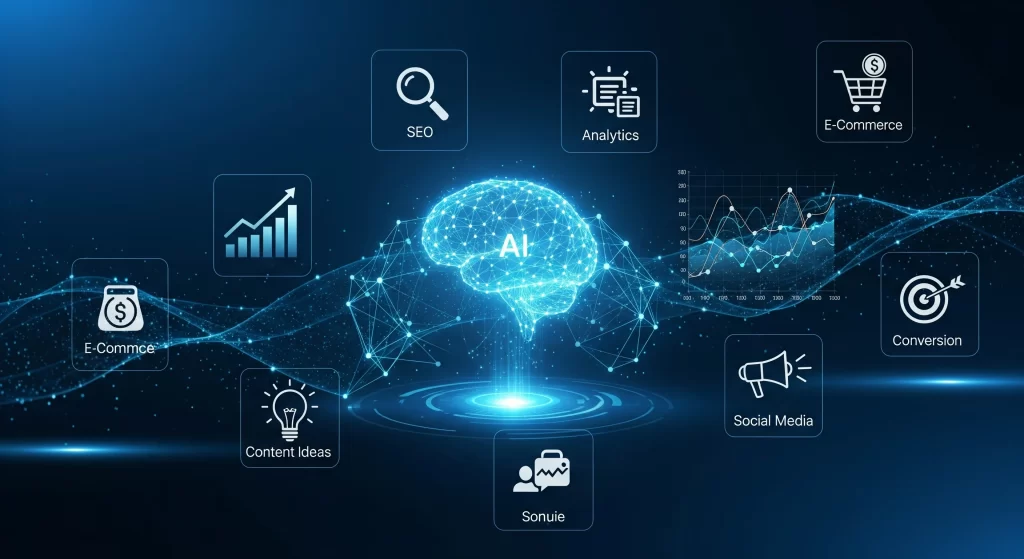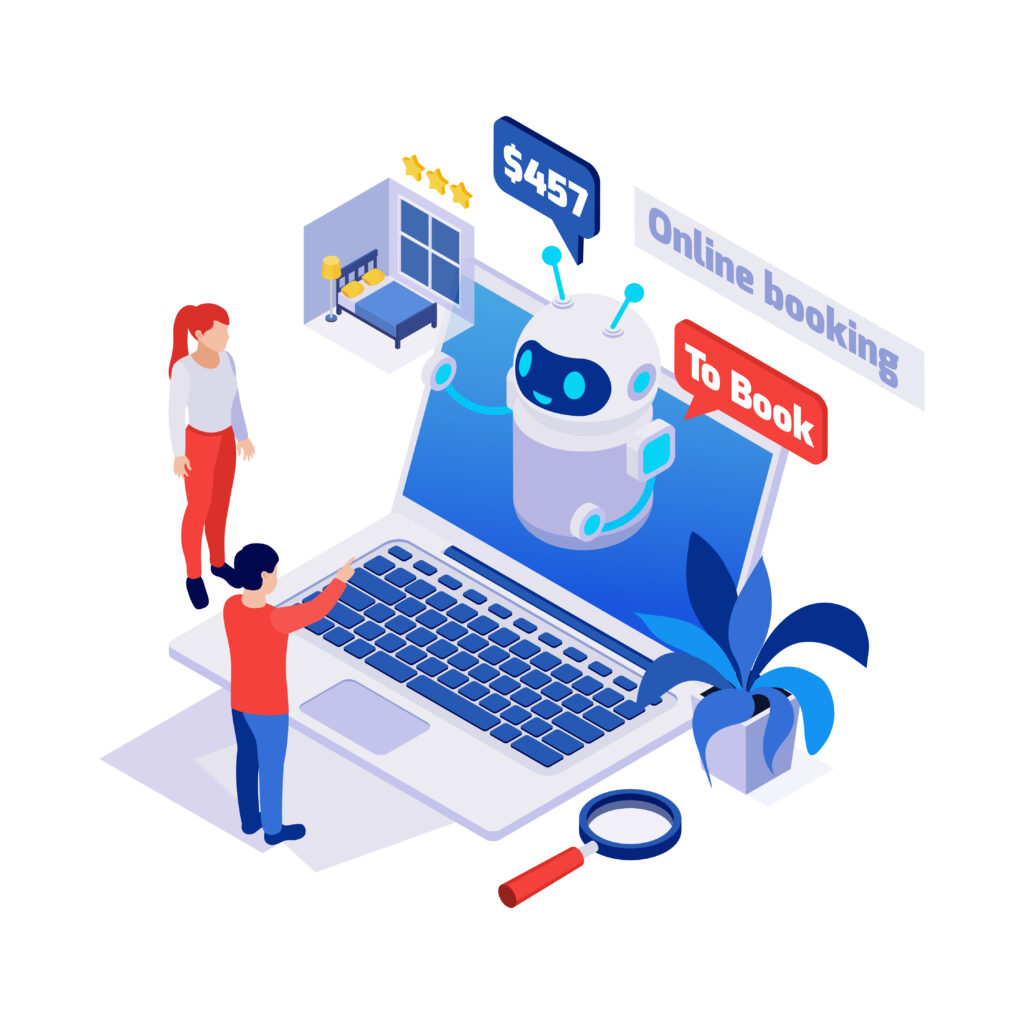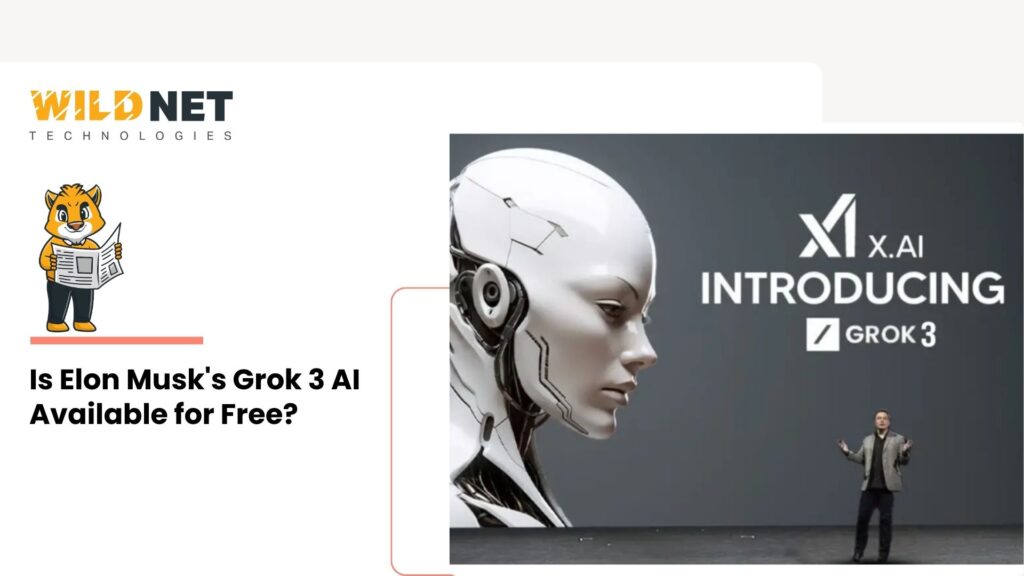Many big names in the industry have already started using AI in digital marketing to have an upper hand over their competitors. This shows how AI is not just a soap bubble waiting to pop, but a massive TNT box that’s ready to explode and change things forever.
If you’re a business owner who takes AI seriously and wishes to hop to the side that’s keeping up with it, we’ve written this blog for you. You’ll explore:
- Meaning of ‘AI in digital marketing’
- Why it matters now
- How it’s transforming marketing functions
- The core benefits of AI in marketing
- Last, but not least, the essential tools leading the charge in 2025
So, let’s get started.
Key takeaways
- Invest in AI fluency.
- Use AI to spark creativity, not replace it.
- Avoid falling into “black box” traps or AI-washing. Build ethical, explainable AI practices.
Table of Content
- What It Means By AI in Digital Marketing?
- Why Does AI in Digital Marketing Matter in 2025?
- Core Roles of AI in Digital Marketing
- Core in Action: How AI in Digital Marketing Powers Strategy
- What Are The Benefits of AI in Marketing?
- Challenges & Considerations
- Top AI Tools by Category
- Best Practices
- Conclusion
What It Means by AI in Digital Marketing?
When you use AI, including machine learning, natural language processing, and predictive analytics, in your marketing efforts with an aim of automatization and getting better results, it’s called AI in digital marketing.
This enables you to take AI’s help in doing many monotonous taks that used to take hours. Investing in AI marketing tools in 2025 means investing in efficiency & strategic actions.
Why Does AI in Digital Marketing Matter in 2025?
AI has something that all marketers love – the ability to streamline enormous data.
Manually sourcing information on competitors, market trends, and your current/potential customers is a hell of a lot of work. But when you have AI, this process is much simpler.
Moreover, from personalization and predictive analytics to hyper-efficient advertising and content creation, AI can do these time-consuming things quickly and at scale.
Alright, now when you’ve got its basics, let’s dive into core roles of AI in digital marketing.
Core Roles of AI in Digital Marketing
Before you start looking up for the best AI tools for marketing, it’s important to know the core functions of AI in digital marketing. So, read on!
Data-Driven Decision Making with Predictive Analytics
At its heart, AI is a prediction machine. Through machine learning models, AI processes past behavior and purchase histories to forecast future actions, like identifying churn risks, forecasting demand, and uncovering emerging trends.
Predictive buying, for example, is widely used by companies like Amazon and Google, leveraging algorithms to predict and serve relevant ads to likely buyers.
Ultra-Fine Customer Segmentation
Traditional segmenting by demographics is no longer enough. AI-driven segmentation uncovers microscopic audience clusters based on psychographics and real-time behavior. This enables hyper-relevant targeting and tailored messaging that resonates deeply.
Automation & Workflow Optimization
Some of the best AI tools for marketing can orchestrate the mundane, from auto-scheduling posts to intelligent bidding. Machine-driven workflows reduce manual errors, save hours, and streamline processes.
Marketing automation is now a core tool for nurturing leads, scoring prospects, and executing cross-channel campaigns seamlessly .
Content Generation & Optimization
Generative AI excels in drafting copy, writing ad headlines, and conducting SEO analysis.
It can even create images, video scripts, and interactive media via tools like GPT, Jasper, and Firefly. AI-powered platforms optimize content in real-time, tailoring messaging for each persona.
Programmatic Advertising & Real-Time Bidding
AI is the brain behind real-time ad auctions. Using machine learning, systems like Google’s and Omneky’s adjust bids, select placements, and test creatives within milliseconds, ensuring optimized ad delivery and budgets.
Conversational AI & Chatbots
AI-powered chatbots and virtual agents (using NLP) handle FAQs, route leads, and guide user journeys instantly. They not only improve response time but also collect data for improved targeting and personalization.
Advanced Search: Voice, Visual & AEO
AI isn’t just behind the scenes; it’s transforming search. Whether optimizing for voice assistants or securing featured snippets (Answer Engine Optimization), AI is central to visibility strategies. It enables natural-language answers and structured responses in SERPs.
Core in Action: How AI in Digital Marketing Powers Strategy
Pilot Thoughtful Use Cases: Start with practical AI marketing tools in 2025 for tasks like content generation, chatbot, or bid automation and then measure impact.
Build the Data Backbone: Integrate systems to create unified data streams feeding AI models.
Invest in Training: Prioritize skill development on tools, data ethics, and model interpretation.
Implement Guardrails: Enforce brand voice, bias-monitoring, and ethical review in AI outputs.
Iterate Continuously: Track KPIs, test variants, and refine AI applications to evolve with audience needs.
What Are The Benefits of AI in Marketing?
The way you decide to use AI in digital marketing determines the kind of perks you will enjoy. From a futuristic idea, artificial intelligence (AI) has become a ‘can’t live without’ tool for contemporary marketers. Here are the benefits of AI in marketing:
Efficiency & Automation
AI makes repetitive marketing tasks almost self-driving:
- Automated content creation, such as drafting blog posts, email subject lines, ad copy, and social captions in minutes.
- Smart scheduling and ad bidding using programmatic systems that adjust in real-time, reducing manual oversight and human error.
- 24/7 chatbot support using AI agents who handle questions, process leads, and capture data around the clock.
By offloading mundanity, marketers can focus on Big Ideas like strategy, creativity, and innovation, rather than admin.
Hyper‑Personalization at Scale
The days of generic messaging are over. AI enables truly dynamic one-to-one experiences:
- Tailoring email sends and website content dynamically based on behavior, history, and micro-segmentation.
- Powering recommendation systems like those used by Amazon and Netflix to boost relevance and customer loyalty.
- Optimizing ad creative and content per individual user sequence, not just audience group.
With AI, personalization is possible at a massive scale, without losing nuance.
Data‑Driven Decision Making & Predictive Intelligence
Many of the best AI digital marketing tools in 2025 excel at turning raw data into future-focused insight:
- Predictive analytics: Forecasting demand, churn, and buying patterns, moving marketers from reactive reporting to proactive strategy.
- Budget optimization: AI dynamically reallocates ad spend as campaigns evolve, ensuring high ROI.
- Customer segmentation: Identifying micro-behaviors and affinities not visible through traditional methods.
These capabilities turn gut-feel into measurable intelligence and marketing into a growth engine.
Smarter Campaigns & Ad Optimization
Ad buying has entered the AI era:
- Programmatic real-time bidding (RTB) ensures advertisers only pay the optimal price at the precise moment.
- Automated ad creation tools, like Omneky, generate and test variants to find what resonates most.
- Sentiment-driven adjustments optimize copy and visuals mid-campaign for higher engagement.
Smart campaigns adapt live, reducing waste and maximizing performance.
Enhanced Customer Experience & Service
Your customers can have many doubts at any time of the day. When you integrate AI in digital marketing, it enables you to be present and answer all their queries as quickly as possible, changing the way you used to converse with them.
- Chatbots and conversational assistants deliver fast, personalized communication without constant human support.
- These bots learn continuously, offering smarter responses, guiding purchases, gathering feedback, and even upselling
- Voice and visual search optimization prepare brands for the future of discovery on emerging platforms.
By being available 24/7, companies can really put themselves in the good books of customers.
Cost Reduction & Resource Efficiency
AI’s efficiency isn’t just fast, it’s cost-savvy:
- Reduced creative costs: AI-generated copy, images, and video eliminate expensive production overheads.
- Lean campaigns: Accurate targeting and ad spend optimization using AI avoids wasted budget.
- Resource savings: AI identifies inefficiencies in campaigns and operations, conserving time and money for strategic work.
These efficiencies enable marketers to do more with less, as budgets tighten and expectations multiply.
Scalability & Agility
AI enables campaigns to expand and evolve effortlessly:
- Multi-channel execution: AI handles email, social, search, chatbots, and SEO simultaneously.
- Campaign replication: Adapt across regions, segments, and languages while maintaining brand consistency.
- Testing and iteration: Run A/B tests, optimize messaging, and deploy improvements continuously without gating strategic pivots
Scalability used to mean headcount and cost. With AI, it means smarter investment in systems, not salaries.
Creativity Amplified, not Replaced
AI doesn’t diminish creativity, it enhances it:
- Idea generation: Prompt-driven tools help explore new copy angles, visuals, hooks, and formats.
- Bravery enabled: AI tools allow rapid and low-risk creativity testing, supporting bold, unconventional ideas.
- Human oversight: AI handles draft and optimization; humans guide tone, emotion, and brand identity
This differs from the cliché of “robots taking over”; instead, they fuel creativity at scale.
Trust & Ethical Considerations
As AI’s reach grows, so does the need for responsible use:
- Bias detection: Human-led audits ensure algorithms don’t embed stereotypes
- Transparency: Let audiences know when AI is shaping their experience
- Privacy compliance: Adhering to GDPR/CCPA is critical in hyper-segmented strategies
When used responsibly, AI builds, not erodes.
Challenges & Considerations
AI is amazing and can do a lot of tasks, but implementing it isn’t plug‑and‑play. When enabling AI in digital marketing, brands face a complex landscape requiring strategic foresight, technical readiness, ethical clarity, and cultural alignment.
AI Skills Gap & Cultural Resistance
Many marketing teams invest in AI tools without investing in people. A recent report from Canva found that 92% of marketing leaders view AI proficiency as essential, yet teams struggle to apply tools effectively without structured training and confidence.
Resistance often stems from fear, such as concerns about job displacement, lack of clarity on AI’s value, and unfamiliarity with workflows. Overcoming this requires intentional reskilling, change management, and patience to build trust in AI’s role.
Data Quality, Integration & Privacy
AI thrives on high-quality data. Yet, fragmented systems and unclean datasets can derail even the most advanced models. Integrating AI tools into existing CRMs, CMS, and analytics platforms is often technically complex, leading to data silos and workflow breakage.
On the privacy front, with regional regulations like GDPR and CCPA, and rising consumer scrutiny, AI-powered campaigns must be built on explicit user consent, clear data policies, and strong security practices.
Bias, Fairness & Ethical Pitfalls
With usage of AI in digital marketing comes the biases that are embedded in it due to training data used. So, unfair ad targeting, exclusion, or reputational harm can be common phenomenas to witness.
Studies find bias in visual AI, while LLMs may generate different messages for various demographic groups, raising real legal and ethical questions.
Mitigating bias requires:
- Diverse, inclusive datasets
- Regular algorithm audits
- Human oversight
Transparency, Trust & Explainability
Advanced AI systems are often “black boxes”: marketers and consumers alike may not understand how decisions were made, why one ad was shown, or why one email subject line was selected. This opacity undermines trust and can trigger algorithm aversion, where consumers distrust AI even when it performs well.
Organizations should prioritize explainability: deploy XAI methods, publish clear AI usage policies, and offer a human fallback in critical decisions.
Over‑Automation & Loss of Human Touch
Automation brings scale and speed, but can strip away the authenticity of human connection. Too much AI-driven interaction, auto-responses, dynamic pricing, hyper-targeted nudges, can feel manipulative, impersonal, or even creepy .
Balance is critical: use AI digital marketing tools to augment, not replace, the human dimension of storytelling, empathy, and strategic thinking.
Technical Infrastructure & Cost
Powerful AI systems demand scalable computing, robust storage, and specialized hardware, whether cloud-based, hybrid, or on-premises. Choosing poorly can result in performance bottlenecks, vendor lock-in, or unexpected costs.
Smaller, optimized models (like neuromorphic or edge-compute solutions) may be more sustainable and accessible for many businesses.
Measuring ROI & Governance
Just buying AI tools isn’t enough; measuring success is hard. Without KPIs and clear governance models, teams struggle to attribute performance improvements or justify further investment.
Define goals early, efficiency, personalization, conversions, and tie AI initiatives to measurable outcomes. Scale pilots carefully, iterating based on real results.
Regulation & Compliance
Specific AI regulations, such as emerging laws for algorithmic accountability, environmental impact reporting, or data governance, are being introduced globally.
Brands should track local and sector-specific AI rules, integrate legal counsel early, and periodically audit AI for fairness, privacy, and compliance.
Top AI Tools by Category
AI marketing tools have exploded in variety and sophistication. Here’s a curated breakdown of the most impactful tools grouped by key marketing functions:
AI Automation & Workflow Management
Gumloop is a rising star, like a Zapier powered by AI. It lets marketing teams build no-code, LLM-driven workflows using GPT-4, Claude, Grok, and more without needing API keys or coding skills.
Gumloop supports continuous agents that monitor new data and trigger actions automatically, making it ideal for tasks like lead enrichment or content syndication.
Meanwhile, Zapier remains a staple, enabling marketers to integrate over 3,000 apps. It zaps automatic event-driven workflows & helps streamline campaign operations with minimal setup.
SEO & Content Optimization
One thing that’s important to get in the head when optimizing content is that it’s not just algorithms but also for the actual people who might click on it with high hopes to get real info and not fluff. Surfer SEO analyzes published drafts, evaluating keyword density, readability, headers, and structure, to help boost SERP rankings.
ContentShake AI combines Semrush’s SEO data with LLMs to generate outlines and full blog posts in multiple languages. It also adapts tone to match your brand and optimizes for search performance in real time.
Other powerful tools include Brandwell (high-quality SEO-driven blog writing) and Originality AI (content plagiarism and AI-content detection).
Copywriting & Content Creation
For streamlined drafting and messaging, platforms like Jasper AI, Writer.com, and Headlime empower marketing teams to generate copy—whether for blogs, landing pages, or ad campaigns—while ensuring brand consistency.
Notion AI boosts productivity with integrated assistance across workflows and document creation.
Hemingway App and Grammarly focus on polish, Hemingway ensures clarity and readability, while Grammarly addresses grammar, tone, and style checks .
Multimedia Content Tools
Creating visual and audio assets is increasingly streamlined:
- Lexica Art generates captivating blog thumbnails.
- Crayo facilitates quick, short‑form video production.
- LALAL.AI separates audio tracks for editing purposes.
- PhotoRoom provides AI-powered background removal for clean visuals.
These AI marketing tools in 2025 make it easier to churn out high-quality media without needing complex editing skills or expensive tools.
Chatbots & Conversational Engagement
Interacting in real time? Tools like Chatfuel (chatbots) and Userbot.ai (conversation management) enable automated, branded customer conversations. These systems manage FAQs, lead routing, and user engagement seamlessly.
Reply.io’s AI Sales Email Assistant supports personalized email responses, enhancing outreach and relationship-building workflows at scale.
Advertising & Media Management
Albert.ai is a standout in autonomous digital ad management, handling creative testing, optimization, and budget allocation across media channels.
Experience & Analytics Tools
Understanding user behavior is crucial. FullStory records every cursor movement, click, and page visit, constructing a narrative of user experience and pinpointing UX improvements or bottlenecks.
Brand24 helps monitor online brand mentions and sentiment, which is essential for keeping tabs on reputation and campaign impact.
Best Practices
Here are the best practices for deploying AI-powered digital marketing, focusing on strategic integration, skill development, testing, transparency, and iterative refinement:
Blend AI with Strategy
AI should support your marketing strategy, not replace it. Use AI tactically for tasks like A/B testing, segmentation, or ad optimization, while keeping human leadership at the center of brand storytelling and strategic decisions. Establish clear roles and escalation protocols to ensure responsible AI use.
Train Your Team
Success hinges on AI fluency. Invest in structured upskilling programs that cover tool operation, data ethics, and insight interpretation.
Test & Refine
Avoid assuming AI outputs are infallible. Toggle on rigorous A/B and multivariate testing where AI suggests improvements, and compare results before full deployment for emerging channels like voice search and pilot experiments to uncover performance nuances.
Ensure Transparency & Compliance
AI’s “black box” nature can fuel algorithm aversion and erode trust. Favor explainable models, document decision processes, and clearly disclose AI usage in both consumer-facing applications and internal operations. Embed oversight and stay aligned with privacy laws and brand ethics.
Iterative Improvement
AI in digital marketing isn’t a one-off solution, it must evolve. Build monitoring dashboards, track drift, retrain models, and incorporate regular audits. Adopt a continuous learning cycle: assess, adjust, redeploy.
Conclusion
The core message is this: AI is a catalyst, not a crutch. There are many benefits of AI in marketing like it transforms workflows, elevates personalization, sharpens decision-making, and expands creative possibilities. However, real success demands a thoughtful, disciplined approach combining purposeful strategy, human-like creativity, and ethical responsibility.
Why this matters?
- AI is powerful: It enables data-driven targeting, predictive insights, and dynamic content.
- Humans remain essential: Strategy-defining, narrative-building, and moral judgment are uniquely human strengths.
- Trust and transparency are non-negotiable: Brands must build AI trust through explainability and compliance.
If you’re looking for an AI digital marketing agency, Wildnet is the place to go. With 19+ years of experience in the marketing & technology industry, we’ve always kept ourselves up with the latest trends.
With experts knowing ins and outs of AI marketing, we’re sure to help your brand excel in this new AI-driven realm. Connect now.






